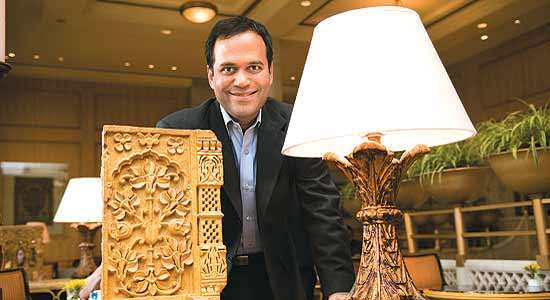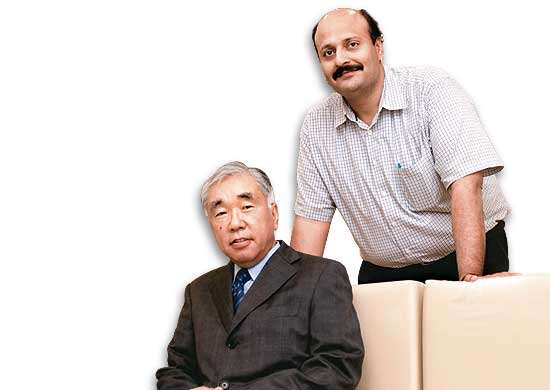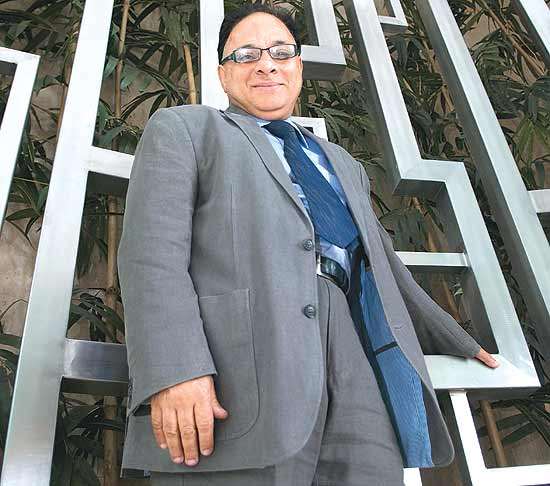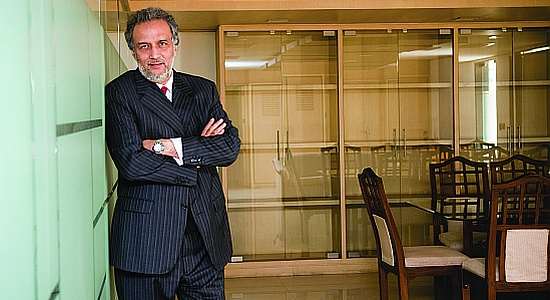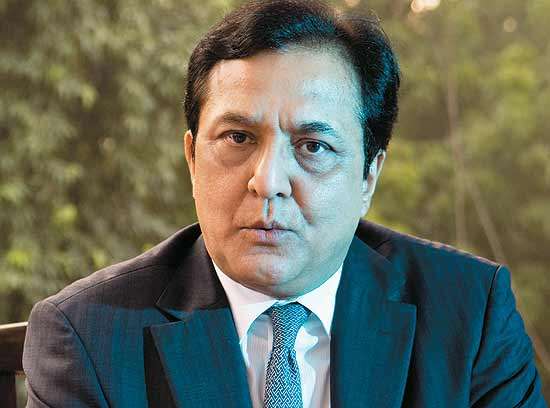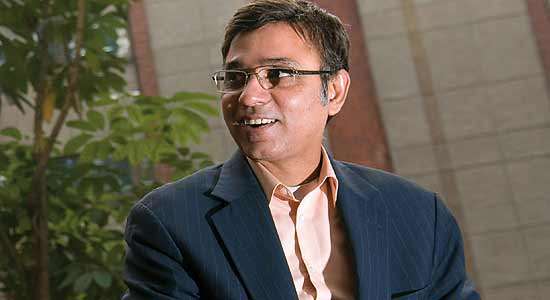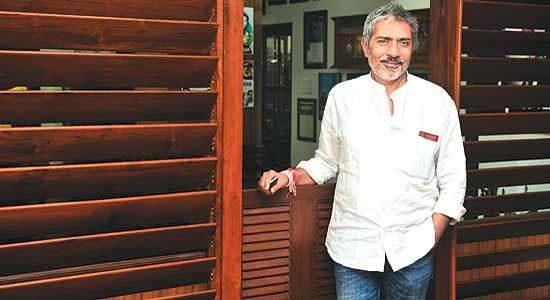Ganesh Lakshminarayanan, President and CEO, Dell India, chatted with Dr Amit Kapoor, Honorary Chairman at the Institute for Competitiveness and Professor of Strategy and Industrial Economics at MDI, Gurgaon, on the metamorphosis of Dell from a hardware manufacturer to a technology solutions company.
Can you give me an overview of your industry?
There are three parts of the industry—hardware, software, and services. I call these three the technology solutions industry—worth $14-15 billion today.
How do you define this industry?
It depends on what you include and what you don’t. The industry, today, is mostly seen as hardware dominant. It’s mostly a PC industry, and 85% of it is desktops and notebooks. Take the Indian consumer, for example: 30,000-odd households have PCs today. So there’s a lot of opportunity in the consumer space. And there are about 4 million small and medium businesses (SMBs) in the country. If you narrow it down to the number of individuals using technology, the figure will come down to about 1.5-2 million. And then there are large enterprises. So while India is known for the IT services side, which is a $40-billion business, most of it is consumed outside the country. So what we see as our addressable opportunity, as per various industry analyses, comes to about $15 billion.
You’ve gone into a newer set of hardware recently called Dell Streak, but with limited success. Please comment.
What we call this whole space is the end-user devices or client computing sector. There is a perception in the market that Dell is a PC company, but more than 50% of our profits come from non-PC sources of revenue. We have been a successful solution provider to corporates. We will bring many devices more to the customers. We are into Android-based phones, OS phones and tablets. But, our prime focus tomorrow is in being the paramount solution provider that will integrate all these end-user devices.
What are you developing in intellectual property (IP)?
We have been in the client space for long. What we want to do is bring solutions that our customers value with our own IP as well as standard-based solutions so that we can bring total secure data solutions to SMBs without going through consultants. If you look at our solution on Boomi (the company we acquired), it helps you take cloud-based applications and then integrate that into your current capabilities, enabling you to attain cloud mapping in the process. In short, we put together a set of services we want to offer, from services to data centre to storage, and then we go after some significant companies or implement structured ways of acquisition (something we have done).
How do you see yourself in tablets?
There are consumption devices that are predominantly used for media consumption like listening to music and watching movies. On the other hand, there are devices that you’re going to use for actually creating content. Now, if you look at our portfolio, we have a significant number of consumption-based devices as well, but our devices are robust on the creation side, too. For instance, the tablet cannot replace our Alienware Gaming Products.
Though tablets are going to be in the consumption space, we don’t see them or the smart phones as the complete future. At Dell, our approach has been to create a robust set of standard-based end-user devices, at which we’ve been pretty successful. We want to extend that to the tablet space as well. We have already launched the 5 and 7 inches tablet. The tablet is going to be a very crowded place.
So what is the differentiation?
I don’t think that differentiating on a client device is going to be our future. If you look at the treatise of our company, you will see us differentiating more from the IP we bring. Take the case of SecureWorks, which offers a secure solution for the SMB space. However, differentiation is possible on a client device as well. If you look at our Android-based smartphone, Venue, it’s the most classy 4.1 inch screen smartphone we have launched in India. In its case, the differentiation comes from not just the commoditised hardware and software but also from the marketing.
The three categories of people using your products are large corporations, SMBs and end-users. How do you reach the last link in this chain, i.e., the end-user?
We didn’t have any presence in India 10 years ago. In the last 10 years, we’ve built close to a $2 billion business in India with nearly one-third of the market share in the notebook space. If you look at the consumer space, we have a very efficient distribution model that reaches many consumers here. So we’ve been able to bring our products very efficiently to this vast sector. Second, we strive to bring a differentiated level of services to our products. So we’ve listened to Indian customers and converted their needs into devices.
There has been a re-emergence of Apple in the last five to 10 years. What is your take on that?
If you consider the consumer space, there are three eco-systems in the market. One is Apple, a company we respect. Next is the Android-based system and last is the Windows-based ecosystem. At Dell, we seek to participate in at least two of these three eco-systems. However, Apple is a proprietary set-up with a close-ended eco-system. So, we’re looking at Android and the Windows-based ecosystem.
But then, doesn’t the ability to differentiate get thwarted?
You’re right. We are not going to focus on just the commoditised space. Our journey is about transformation as a company and we will become a complete solutions and services company.
Who is your biggest competitor in the solutions space?
If you look at the domestic market, it is IBM. HCL is big in domestic services. But the market is still pretty wide open.
What are the challenges for you today?
Our company has been built on selling hardware. Our first challenge is our internal organisational structure—the client solutions, enterprise and services solutions. Our customer facing organisations remain the same. We have a consumer, an SMB space and a larger business space. But at the back-end, the horizontal box usage—the server line or the storage line—is absent. So we have to change that.
Another task is to provide training to the sales force, so that they change their way of selling. We’re also going through a brand transformation. Dell is known as one of the top PC companies and also a decent server storage provider today, but we want to be known as a credible solutions provider. Our solutions will make technology available to everybody at a cheaper and faster rate.
If you make technology affordable, a huge transformation in society is bound to happen.
What impact does your business have socially?
The social impact of our business in India will be phenomenal. If you look at the next generation, they have so many avenues open to them for a career. The market for SMBs of the world today is virtual rather than physical. They should be able to participate in the global market place outside. So if we can bring technology that allows them to do it without worrying [about cost], then they can focus on their business while somebody else is making sure that their HR, sales force and supply chain systems run smoothly. This helps them to participate in a different market economy, bringing in a lot of efficiency in our space.
We’re excited about the public space as well. Technology is a huge enabler for making our government more transparent. Everything can happen online, reducing the number of trips a person makes to a government department. The positive result is the development of faith of the public in the government machinery. So if you make technology affordable, a huge transformation in society is bound to happen.
The strategy of education here is flawed. Can Dell play a catalytic role?
We believe that India’s transformation is going to start from classes in rural areas. We have a product called “Connected Classroom.” The singularity of this product is its mobility. It is basically a computer in the form of a notebook and trolley. So you can actually bring computers into the classroom rather than take the children to the computer. The second prerequisite is a computer-oriented curriculum. A lot of companies are participating in this. The third leg is the urgency of quality teachers. “Connected Classrooms” provides a solution to this issue by connecting 10 classes to one teacher. Michael Dell used this to teach management from his office in Austin to kids in South Wales and New South Wales in Australia.
Have there been strategic decisions of not doing certain things?
Our trade-offs are dependent on our internal strengths. When we first came to India, we didn’t have a manufacturing plant. So we decided that in order to participate in the consumer, small and medium business (CSMB), we needed exclusive participation in the corporate space. Today, we are participating in the CSMB market aggressively.
But we have said we don’t want to be in a commoditised space. We’re not participating in the low-end desktops and notebooks space. We have made a trade-off that we are not going to participate in this very labour-intensive development space because we can’t compete with established players. We’ve come into the tablet space late, but we believe that any time there is a product out there with so many players jumping in, it’s going to get crowded quickly. We wanted to stay out of that and in contrast want to transform ourselves to a solution company from a hardware company. We have used our cash in acquiring certain IPs in the space and are putting this together to offer a different chain of solutions in the marketplace, not based on proprietary standards.
How are consumers changing?
The consumer today has made our content and concepts more valuable. We believe the value in the consumer space for us is a unified interface, which works across all our devices. The stage is set for an interface which can work on Android- or OS-based devices.
What are your thoughts on strategy?
Strategy is about creating sustainable profit pools to customers. It’s not about building a profit pool that works for a year or two but rather, one that works a little longer. I have set up goals for revenue margins. So my challenge is to continue to tie up with people who will be successful in the Dell culture and bring innovation along with that risk taking streak.
And leadership?
Leadership is about taking risks and being innovative and having a futuristic vision. That’s what’s going to help to differentiate us from our competition. Taking into account a workforce figure of 25,000, leadership has undoubtedly been our single most important differentiator!
4cs Model
Context
- Differences in internal organisational structures.
- Transformation from a PC company to a solution provider.
- Commoditisation of end-user devices.
Customer
- National and international.
- Three categories: Large corporations, small & medium businesses and end-users.
- Demanding value for money.
Company
- Customer-centric, standard-based solutions.
- Participation in consumer, small and medium businesses.
- Accounts for the company’s largest employee base outside the US.
Competition
- Global end-user devices: consumption and creation-based devices.
- IBM and HCL in the domestic solution space.
- Adoption of technology in India at a nascent stage, so opportunity for expansion exists.
Evolution of the Industry
- Stage 1 Market dominated by global PC and hardware manufacturers.
- Stage 2 Metamorphosis from a premier hardware industry to an industry providing technology solutions.
- Stage 3 Plunge into a newer set of hardware devices—smartphones and tablets.
The Strat Speak interaction was published with Outlook Business on July 23, 2011.

